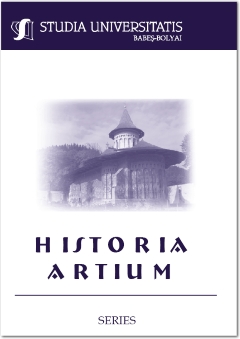(NE)CAZUL ARHITECTULUI LAJOS PÁKEI CU DOI ARISTOCRAŢI HOTĂRÂŢI: CONSTRUCŢIA CASTELULUI DIN ZAU DE CÂMPIE (1908-1912)
THE INCIDENT BETWEEN ARCHITECT LAJOS PÁKEI AND TWO RESOLUTE ARISTOCRATS: THE CONSTRUCTION OF THE COUNTRY HOUSE FROM ZAU DE CÂMPIE (1908–1912)
Author(s): Beáta BordásSubject(s): Fine Arts / Performing Arts
Published by: Studia Universitatis Babes-Bolyai
Keywords: country-house; István Ugron; Lajos Pákei; János Bánffy; Zau de Câmpie; architectural history.
Summary/Abstract: The Incident between Architect Lajos Pákei and Two Resolute Aristocrats: the Construction of the Country House from Zau de Câmpie (1908–1912). The study presents the architectural history of the country house from Zau de Câmpie (Mureş county, Romania), based on yet unprocessed documents from the Ugron family archives (in the Romanian National Archives at Cluj) and the bequest of the architect Lajos Pákei (in the Archives of the Unitarian Church from Transylvania, Cluj). The country house was built between 1908 and 1912, being one of the last Transylvanian country houses constructed in the era of historism, reproducing architec¬tural elements of medieval castles from the Loire Valley (France). It was built for István Ugron (1862–1948), who was a diplomat and an outstanding art-collector. He could have been motivated either by a fiancé demanding a fancy country-house, or by his own need for representation: this monumental neo-gothic building could have pointed to the historic role of his family and evoke the dreamworld of the Middle Ages. Several plans of the country house, including some preliminary sketches made most probably by the owner or by baron János Bánffy, were preserved. Bánffy is referred to on the plaque placed on the rear facade of the castle as the one who was responsible for the drawings of the building. He might be the one who came up with the building’s conception, but his idea was transplanted into arhitectural reality by the trained arhitect, Lajos Pákei. The latter was the most renown arhitect from Cluj of the time, and his role was to correct the deficiencies of the building. Among other topics, the sources provide abundant data on the architectural history of the country house and the work of the craftmen employed at the construction, but also on the relationship between architect Pákei and his commissioners. A detailed analysis of the various plans of the building has also been offered, these implicitly gave an architectural description of the country house.
Journal: Studia Universitatis Babes Bolyai - Historia Artium
- Issue Year: LVI/2011
- Issue No: 1
- Page Range: 121-135
- Page Count: 15
- Language: Romanian

